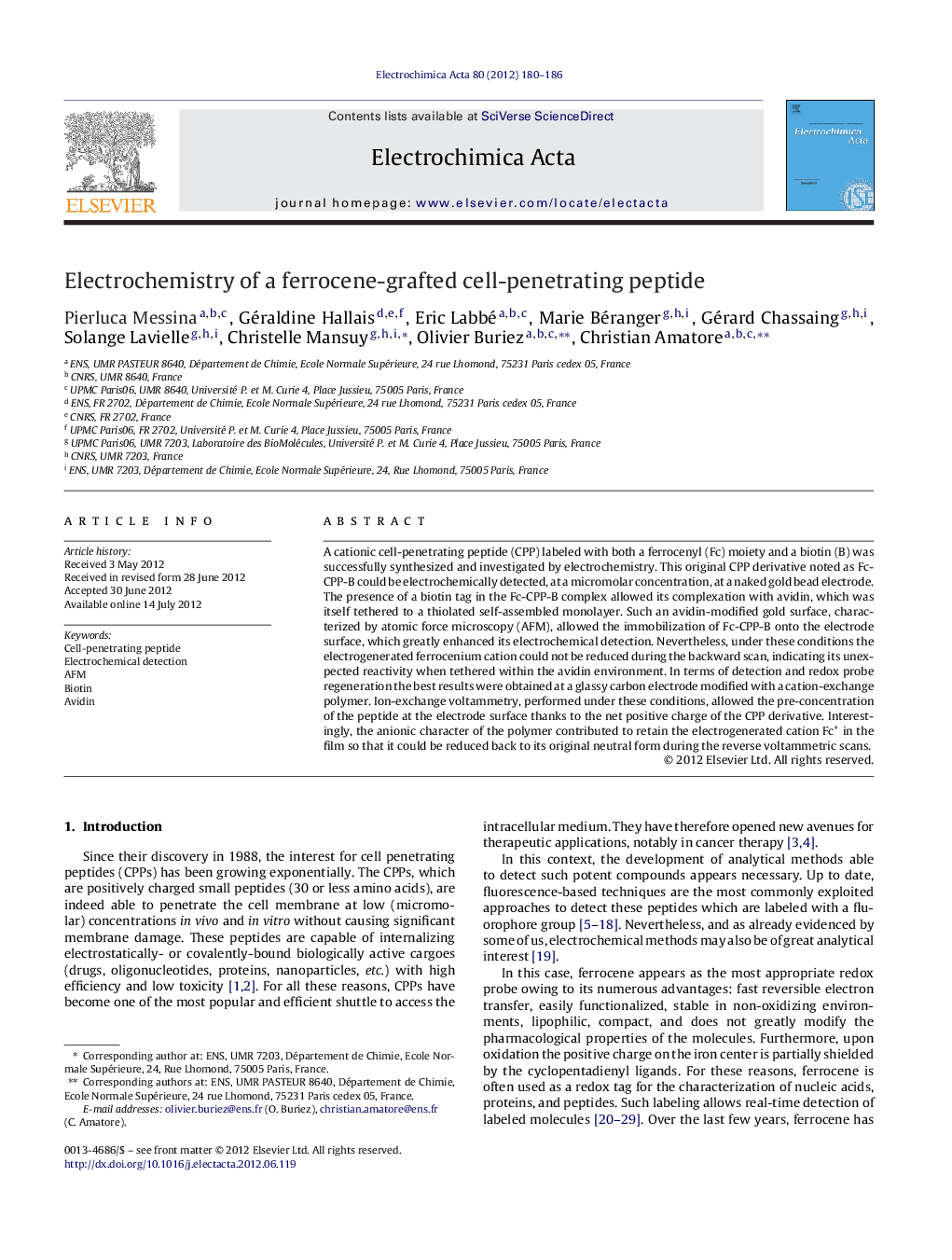| Article ID | Journal | Published Year | Pages | File Type |
|---|---|---|---|---|
| 187887 | Electrochimica Acta | 2012 | 7 Pages |
A cationic cell-penetrating peptide (CPP) labeled with both a ferrocenyl (Fc) moiety and a biotin (B) was successfully synthesized and investigated by electrochemistry. This original CPP derivative noted as Fc-CPP-B could be electrochemically detected, at a micromolar concentration, at a naked gold bead electrode. The presence of a biotin tag in the Fc-CPP-B complex allowed its complexation with avidin, which was itself tethered to a thiolated self-assembled monolayer. Such an avidin-modified gold surface, characterized by atomic force microscopy (AFM), allowed the immobilization of Fc-CPP-B onto the electrode surface, which greatly enhanced its electrochemical detection. Nevertheless, under these conditions the electrogenerated ferrocenium cation could not be reduced during the backward scan, indicating its unexpected reactivity when tethered within the avidin environment. In terms of detection and redox probe regeneration the best results were obtained at a glassy carbon electrode modified with a cation-exchange polymer. Ion-exchange voltammetry, performed under these conditions, allowed the pre-concentration of the peptide at the electrode surface thanks to the net positive charge of the CPP derivative. Interestingly, the anionic character of the polymer contributed to retain the electrogenerated cation Fc+ in the film so that it could be reduced back to its original neutral form during the reverse voltammetric scans.
